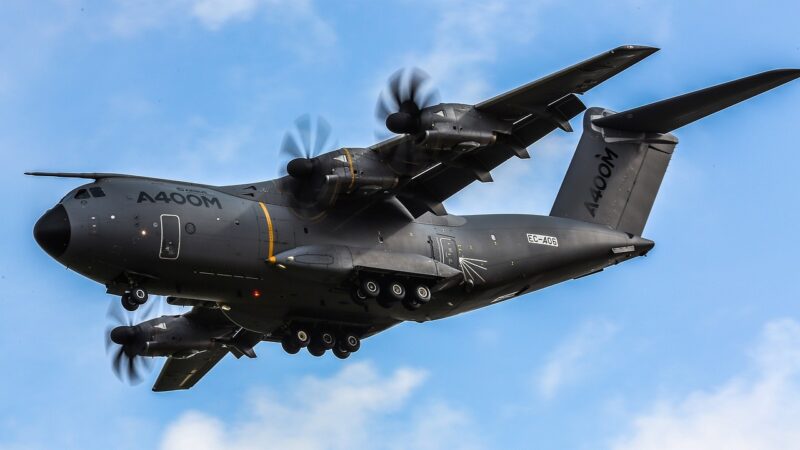Weapons of the Future: Are We Prepared for the Next Generation of Defense Systems?
November 17, 2024

As we transition further into the 21st century, the landscape of warfare and defense systems is changing at an unprecedented pace. From drones to artificial intelligence, advancements in technology are creating new possibilities for military engagement. The question looms large: Are we prepared for the next generation of defense systems, and what will these systems mean for peace and security across the globe?
1. The Evolution of Military Technology
Military technology has come a long way since the dawn of civilization. From the introduction of gunpowder to nuclear weapons, each leap forward in technology has fundamentally altered the nature of war. Today, a new evolution is underway, characterized by the integration of various technologies:
- Robotics and Drones: Unmanned aerial vehicles (UAVs) are becoming a mainstay in modern warfare, offering surveillance capabilities and precision strikes without risking the lives of human pilots.
- Artificial Intelligence: AI is playing an increasingly prominent role in decision-making processes, logistics, and predictive analytics for military operations. Automated systems can analyze vast amounts of data in real-time, significantly speeding up operational readiness.
- Cyber Warfare: As nations become more interconnected, cyber warfare is emerging as a crucial battlefield. Attacks on infrastructure, data theft, and hacking operations have the potential to disrupt societies at a fundamental level.
These technologies not only influence how wars are fought but also pose questions around ethics, legality, and preparedness.
2. Emerging Concepts in Defense Systems
As nations invest more in research and development, several emerging concepts in defense systems deserve attention:
- Hypersonic Weapons: These weapons travel at speeds exceeding Mach 5, making them incredibly difficult to detect and intercept. Their development could change the dynamics of range and response times in warfare significantly.
- Directed Energy Weapons (DEWs): Lasers and electromagnetic guns are being developed to provide precise targeting capabilities with minimal collateral damage. Such technologies may play vital roles in air and missile defense in future conflicts.
- Autonomous Weapons Systems: These systems can select and engage targets without human intervention. While they offer advantages in speed and efficiency, they also raise ethical concerns regarding accountability and decision-making in combat situations.
With these advancements, the military’s core strategy and tactics must evolve, prompting discussions about rules of engagement and conflicts under international law.
3. Are We Prepared? Overview of Current Readiness
Despite the advancements, many factors influence global preparedness for next-generation defense systems:
- Training and Human Factors: The integration of advanced technology requires extensive training for military personnel. Proper training is crucial for ensuring that soldiers can effectively operate sophisticated systems and adapt to new battle scenarios.
- Ethical Decision-Making: Preparing for autonomous weapon systems and AI-driven strategies necessitates a reevaluation of ethical frameworks in warfare. Are current guidelines sufficient to guide actions in conflicts involving AI and automated systems?
- International Regulations: The disparity in technological development among nations could lead to an arms race. Effective international collaborations and treaties must be addressed to manage the implications of new weaponry on global peace.
Moreover, a seamless transition from traditional to advanced warfare requires proactive dialogue between military strategists, policymakers, and technologists.
4. Case Studies: Countries Leading the Charge
Several nations are at the forefront of developing cutting-edge defense systems:
- United States: The U.S. remains a leader in defense technology, investing billions annually into military R&D. Projects like the next-generation fighter jets and increased focus on AI integration show the U.S. commitment to maintaining military superiority.
- China: Looking to become the global leader in AI and robotics, China is accelerating its military modernization efforts, focusing on cyber capabilities, UAVs, and advanced naval assets.
- Russia: Known for its unique military innovations, Russia has developed hypersonic missiles and autonomous combat vehicles, showcasing its commitment to cutting-edge warfare capabilities.
These case studies provide insight not only into military advancement but also into how nations perceive their role on the global stage regarding defense and deterrence strategies.
5. Future Implications for Global Security
The implications of these weapons and defense systems reach far beyond military corridors. As nations redefine their military capabilities, the international community must grapple with issues such as:
- Escalation of Arms Race: With rapid advancements in weaponry, nations may feel pressured to enhance their defense technologies, leading to heightened tensions and potential conflicts.
- Cybersecurity Threats: As military systems integrate more technology, protecting these systems from cyber threats becomes imperative. A compromised defense system could lead to disastrous outcomes.
- Humanitarian Concerns: The ethics of using autonomous or AI-driven systems raises humanitarian concerns that must be addressed to ensure compliance with international humanitarian law.
The future of global security will depend on how well we manage these challenges while fostering cooperation among nations.
Conclusion: The Way Forward
As we stand on the brink of a new era in military technology, it is crucial that nations approach these advancements with foresight and responsibility. Preparedness for the next generation of defense systems requires collaboration, ethical considerations, and a commitment to international consensus on rules and norms governing warfare. By addressing these critical issues now, we can hope to navigate the complexities of modern warfare and ensure that the weapons of the future serve as a means of deterrence rather than destruction.
Are we ready for what’s next? The answer will shape our world for generations to come.







